By Lucy Gordan
De honesta Voluptate ac Valetudine libri decem (On honest indulgence and good health, Ten Books, often shortened to De honesta voluptate) was the first cookbook ever printed. Compiled ca. 1465 by Bartolomeo Platina, it appeared between 1470 and 1475 in Rome.
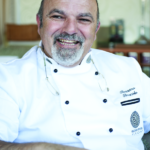
Rossano Boscolo, creator of Garum
Its inauguration postponed several times since early February 2020 because of COVID, Garum: The Library and Museum of Cooking finally opened in Rome on May 26. The website www.atlasoscura.com lists 81 museums worldwide devoted to the history of food, but none of these includes a research library. Moreover, the only library I know of with a larger collection of cookbooks, food-related pamphlets, and menus is at the New York Academy of Medicine, 1216 5th Avenue, which houses some 10,000 items, including a 4th-century AD manuscript of De re culinaria (“Concerning the culinary arts”) by the ancient Roman chef Apicius.
Garum gets its name from a liquid sauce of fermented fish entrails used by the ancient Roman as dressing for their appetizers and main dishes.
Garum’s complex is unique not only for its dual contents, but because of its location, Via dei Cerchi 87, at the bottom of the Palatine Hill where the ancient Roman emperors built their luxurious residences.
According to legend, this site had been the lupercale or grotto where the she-wolf nursed Romulus and Remus. Then in the 4th century AD the Basilica of Santa Anastasia, the first Christian Church built inside the ancient city walls, was erected here.
It seems that the Basilica was built on the ruins of an enormous building dating to the first century AD. Several centuries later, after this area had become part of the Orti Farnesiani (Farnese Gardens), the first private botanical gardens created in 1550 by Cardinal Alessandro Farnese, the Benedictines built their Monastero dei padri Olivetani here. The Order still owns the building, which has recently been extensively renovated to accommodate its new activity, before renting it to Garum.
Garum is the brainchild of Rossano Boscolo, born in Chioggia in 1956, the second of chef/hotelier Bruno’s five sons.
After graduating from hotel school in Abano Terme near Venice, Boscolo returned home to run the kitchen in his father’s first of several hotels worldwide, but soon afterwards, in 1982, left for Paris.
He was the first Italian to study with Gaston Lenôtre, considered one of the greatest pastry chefs of the 20th century. Lenôtre became Boscolo’s mentor together with another top French pastry chef, Charles Ceva, who in 1985 advised Boscolo to open Italy’s first professional academy for chefs. First located in Cavàrzere, 15 miles southwest of Venice, Boscolo soon relocated it to his father’s Hotel Airone in Chioggia, and then in 2010 moved it again to its international campus in Tuscania near Rome, where it remains today. Over the years some 20,000 professional chefs have graduated from Boscolo’s academies.
“I started to collect for my own pleasure because I love history,” Boscolo told me. “I used some of these old utensils in my kitchens. As for the books, when I was a student and later when I started teaching, there were no internet or cooking programs on TV, only books. I had no ambitions to become a ‘professional’ collector, much less to open a museum.
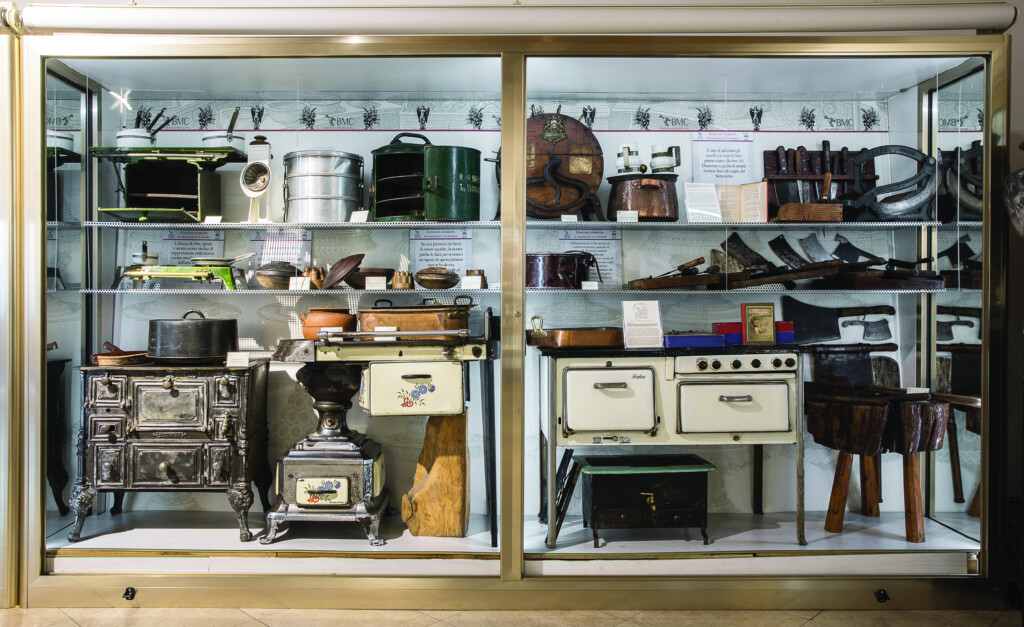
Gas stoves dating from the 19th century to the 1950s
“About 25 years ago, I met the bookdealer Matteo Ghirighini, today Garum’s director. He convinced me of the importance of owning rare first editions. My first purchase from Matteo was the library of the distinguished food historian Claudio Benporat. Today I own some 4,000 utensils, 1,000 of which are displayed here at Garum. Of my 3,500 books, 2,000 are first editions; some 300 of them here on display. The other books are in Garum’s research library open to scholars by appointment. My most recent acquisition are some 3,500 historical menus. Garum’s entrance is free because we want the freedom to organize seminars, our own guided tours, private events, and tastings using recipes in our books during conventional museum hours.”
Garum is divided into two sections. The kitchenware is displayed in 11 glass cases on the ground floor: speculoos or wooden molds for making thin gingerbread biscuits, a Christmas time specialty in the Low Countries spiced with cinnamon, cloves, and cardamom; then metal cake and chocolate molds (Boscolo’s favorites) of many different shapes; gas stoves dating from the 19th century to the 1950s; all kinds of pots and pans; 19-thcentury utensils for making bread and pasta, gelato, and cheese; and ceramic duck-shaped foie-gras terrines.
The most unusual objects are wooden bowls with covers from an 18th-century monastery refectory, and the first “culinary” game for children made in Ravensburg, Germany, in 1898.
“The earliest books on exhibition,” Boscolo told me, “date to the Italian Renaissance, because, thanks to itinerant typographers from Germany, Italy—especially Rome and Venice—became extremely important centers of printing. We know, for example, that during the Renaissance 153 cookbooks were printed in Italy and only three in France, one of which was a translation of Platina. The situation changed when in 1533 Catherine de’ Medici married Prince, later King, Henry II of France. Although she’d brought Florentine chefs with her, from between the late 1550s to the 1950s, France was the center of cuisine worldwide. So it could be said that we taught the French to cook and then they taught the world.”
The stars of Boscolo’s collection are De honesta Voluptate ac Valetudine libri decem compiled by Bartolomeo Sacci, better known as Platina, and printed in Venice in 1517.
It’s the first printed book about cuisine.
“Platina” was not a cook; he was a man-of-letters and the first director of the then newly-established Vatican Library. The book contains the recipes of Maestro Martino, the most important European chef of the 15th century, who worked at the court of the Cardinal of Aquileia between 1450 and 1465.
Martino’s recipes are similar to those of the late Middle Ages, quite simple to follow, and much less elaborate than those of the Renaissance courts contained in another star of Boscolo’s collection, Opera, created by Bartolomeo Scappi and printed in Venice by Michele Tramezzino in 1570.
Scappi was the private chef of Pope Pius V. “Opera, my most prized possession,” Boscolo told me, “is the first illustrated (32 drawings, including the first one of a fork) printed cookbook; for the first time cooks had access to recipes previously inaccessible outside the Papal Palace.”
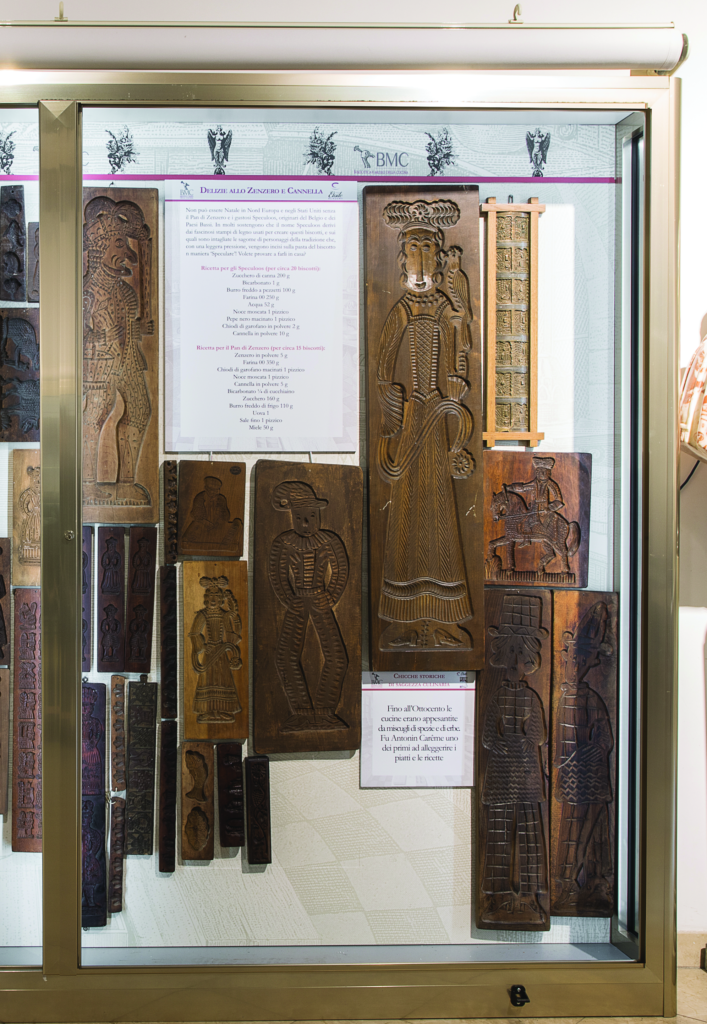
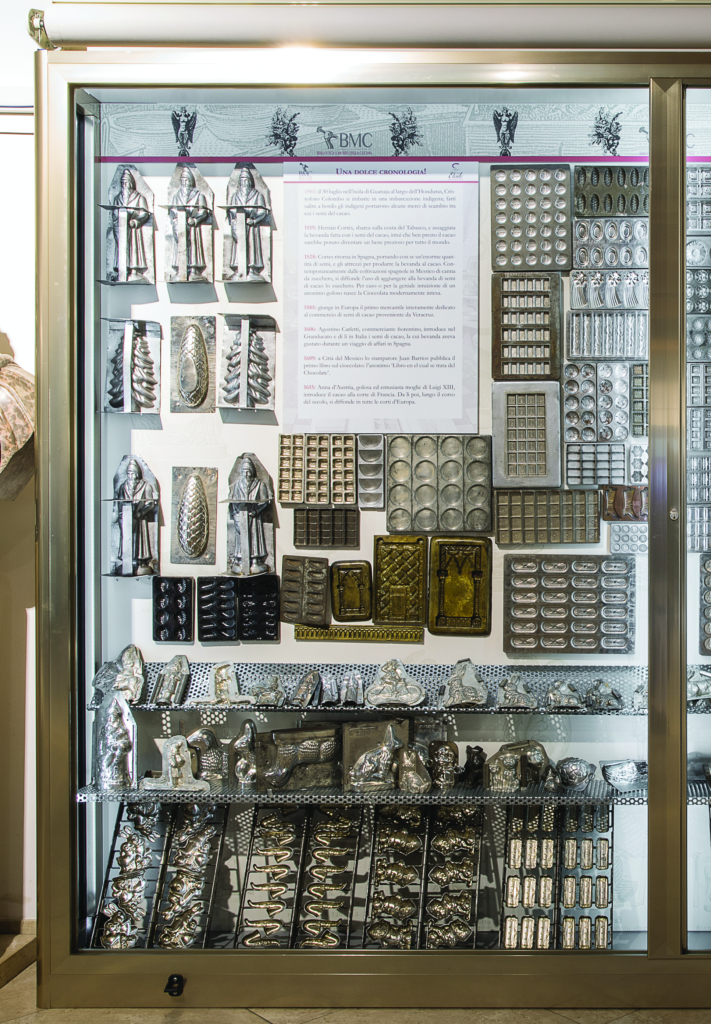
Gingerbread and chocolate molds
For example, Scappi tells us that Pope Pius V’s favorite dish was frog, but not any old frog. It had to come from Bologna, because frogs from there were chubby and especially delicious. His favorite recipe was crisply-fried frog’s liver fritters.”
An innovative chef, Scappi was the first to introduce ingredients from the New World. Opera also contains over 200 pasta recipes, many sprinkled or filled with cascio parmigiano, which he said “was the best cheese in the world.” Other highlights are Pellegrino Artusi’s La Scienza in cucina e l’arte di mangiare bene (“Science in the kitchen and the Art of Eating Well”) first published in 1891.
Filled with amusing anecdotes as well as recipes, the book is still a perennial bestseller in Italy. It has been translated into Dutch, English, French, German, Polish, and Portuguese.
Another is Vittorio Agnetti’s La Nuova Cucina delle specialità regionali (Milan, 1909). Although not the first cookbook devoted to a single region’s cuisine, it’s the first volume to include every region of Italy.
The third is Rosa Aiello’s La cucina casareccia napoletana per golosi e buongustai, published in New York in 1940 to soothe the emigrants’ nostalgia for Italy.
Additional curiosities include: De Romaniis piscibus Libellus (A Pamphlet About Roman Fish), the first cookbook devoted to fish, by Paolo Giovio (Basel, 1531), like “Platina” a man of letters and not a cook.
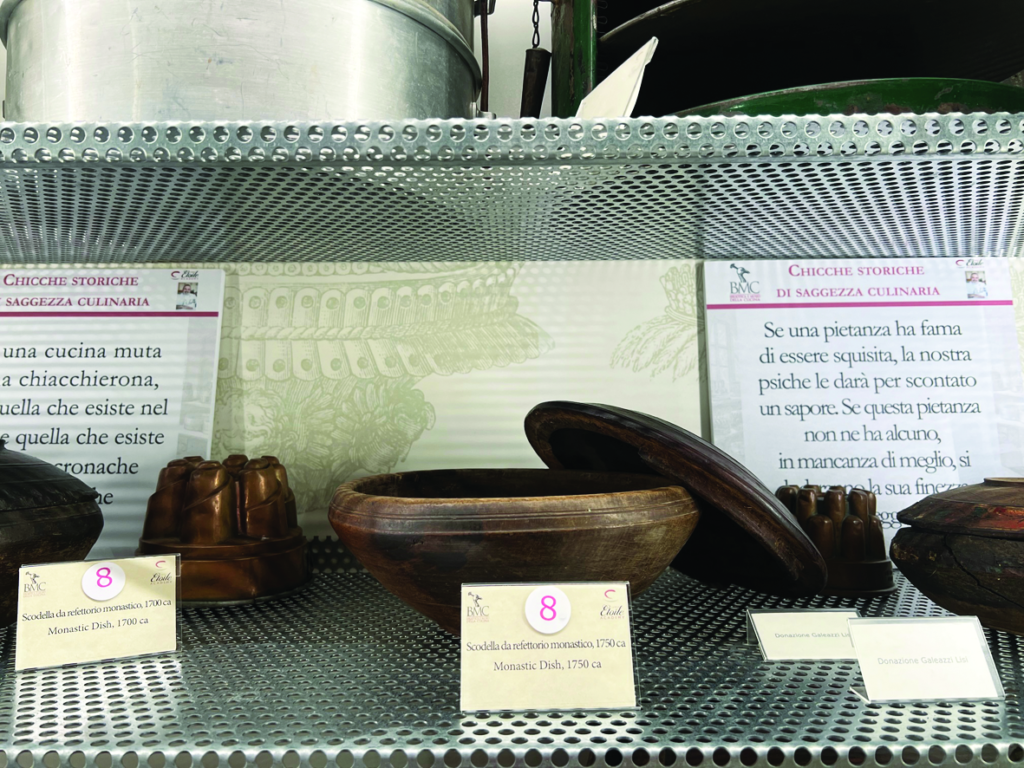
Wooden dish with cover from an 18th-century refectory
Giovio wrote this volume after being a guest at a papal dinner, where the conversation concerned the fish available on the Roman market.
Lo Scalco alla moderna (The Modern Steward) by Antonio Latini, the steward of Cardinal Antonio Barberini, cardinal-nephew of Pope Urban VIII (Naples, 1692) contains the first recipe for tomato sauce.
And Le Petit Cuisinier Moderne (Paris, 1890) by Gustave Garlin, one of the great chefs of the second half of the 19th century, is the only great cookbook written in prison, while its author was serving a two-year sentence for sedition. Garlin was also the first chef to present cheese at the end of a meal.
To learn all about Boscolo’s still growing collections, consult Garum’s state-of-the-art website www.museodellacucina.com. In both Italian and English, it contains historical information on the utensils and bibliographical information for every volume on display, as well as texts from publications written by Ghirighini, Boscolo and his students.






Facebook Comments